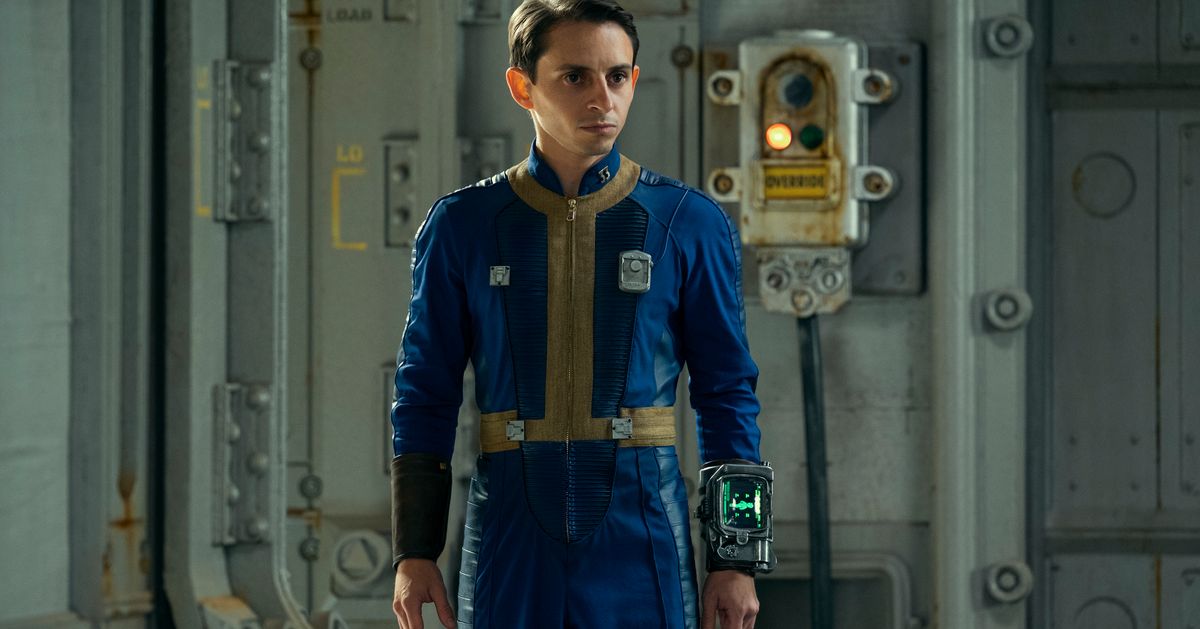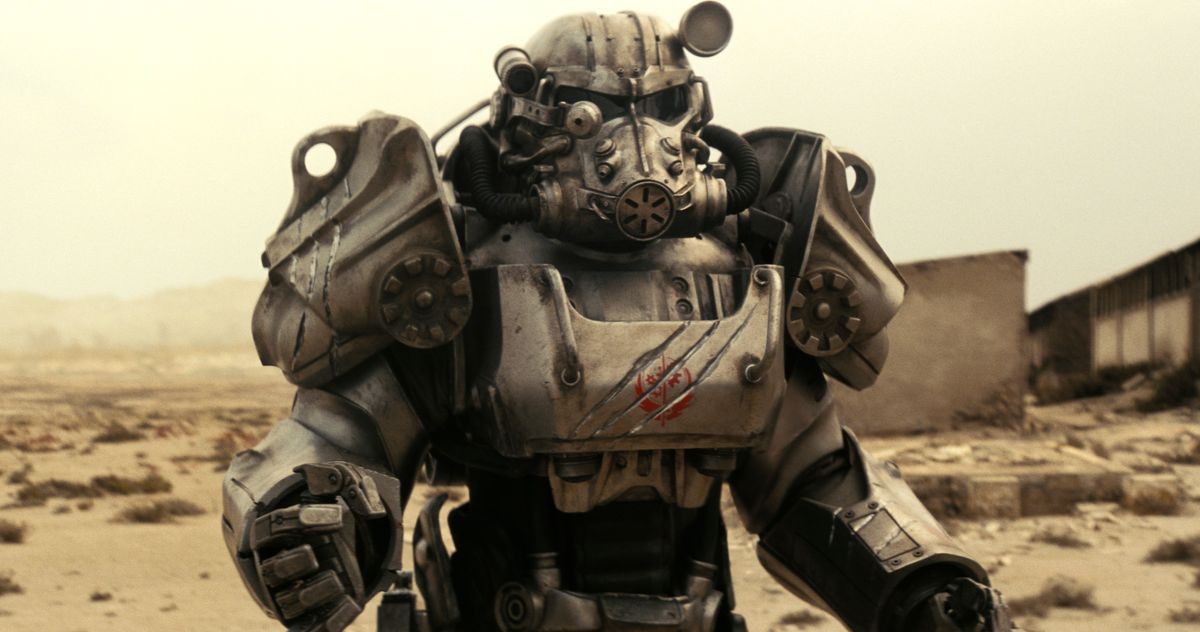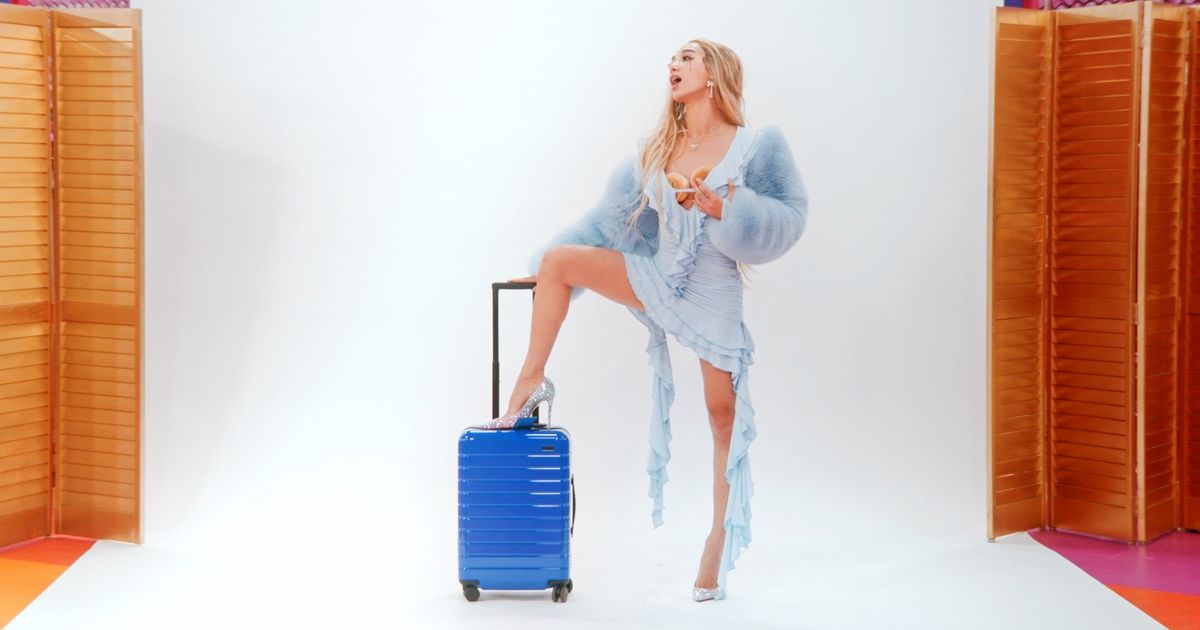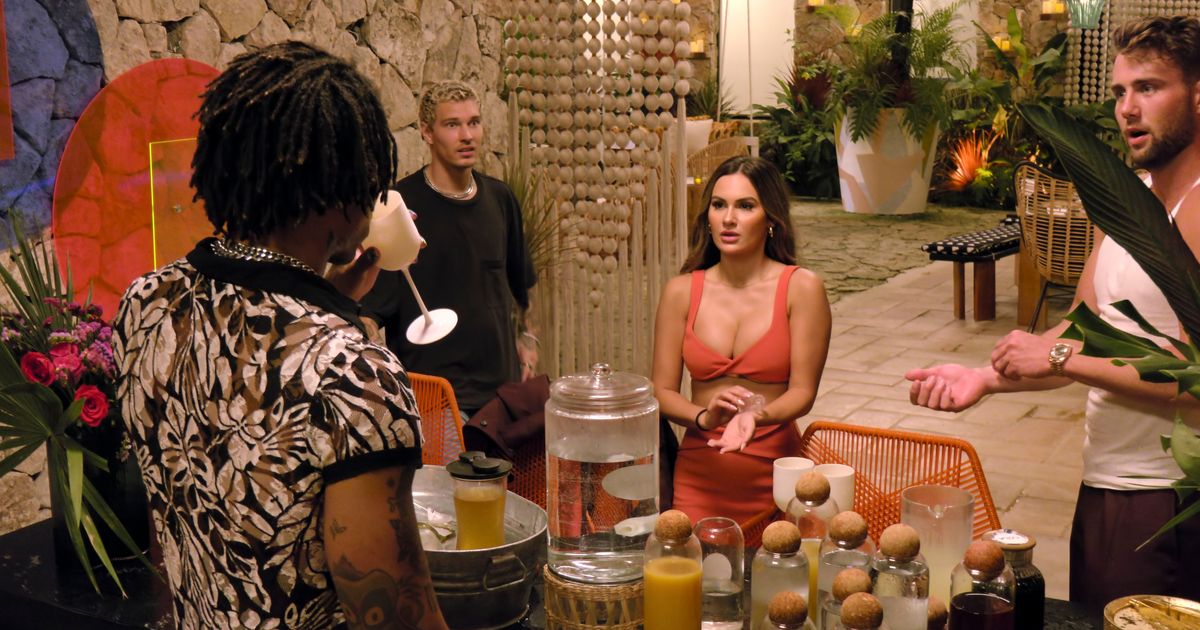Photo: JoJo Whilden/Prime Video
Okay. Phew. Well. From filler to killer, that was a pretty densely packed episode. From major revelations in the pre- and postwar timelines, to some pretty insidious shit going down in Vault 4, right through to Walton Goggins keeping the badassery dialed up to 11, I think we can forgive ourselves if we want to take a beat before we get into it.
So. We discovered the timeline for the rise and fall of Shady Sands and are left to presume that the NCR is on death’s door, if it hasn’t already collapsed. We also spent the most time we have yet in the prewar days, where a Vault-Tec conspiracy — which we can reasonably assume to be linked to the mystery of Vault 31 — is rapidly unfolding. With scenes in the world before it was nuked, we’re learning more about Fallout’s America in the days and months preceding the Great War than we ever have. As the real-world had McCarthyism, we’ve discovered that Fallout’s Hollywood was subject to its own Red Scare, with prominent actors defecting across ideological lines. Meanwhile, a U.S. government in the throes of war with the Reds may be on the precipice of a peace treaty they’ll never sign. As we saw in the first episode, tragic inevitability hangs in the air.
“It’s going to be hard on her, that’s all,” says Barb of her daughter Janey over dinner with shrugging indifference. “You know, no dogs in the vaults.” Uncertainty is everywhere, aside from the certainty of the end.
Prewar America is a rich resource that the Fallout franchise, aside from the prologue to Fallout 4, has largely left untapped. There are reams of lore that you can find in-game through terminal entries, or scraps of paper from before Armageddon, much of which you can find collated by Fallout nerds in entertaining YouTube essays. But the Fallout show is the first time we’ve spent any real, consequential time in America circa 2077. That probably won’t mean anything to you if you’re new to the series through the show, but to dyed-in-the-wool fans — I’m sure I’m not just projecting my own experience when I say this — it’s a breath of fresh air. We’ve always wondered what it was like before, anyway, and the visual experience of TV lends itself to such a vibrant, Googie world. On which subject: The production team on Fallout really, really deserves their flowers.
It’s the little details that really matter. The attention to and inclusion of familiar brands, corporations, and entities from the game that exist as window dressing make Fallout what it is. The consistently nailed design aesthetic, which feels like a perfect blend of Fallout 4’s bulky retrofuturism and the western style of Fallout: New Vegas. This is complimented on a script level, of course, in dialogue that feels, often, ripped straight out of a Fallout game, be it in Cooper Howard’s Vault-Tec advert at the beginning of the episode, where he shows off Vault 4 (“strong enough to keep out the rads … and the Reds”), or in Lucy’s conversation with the one-eyed Vault 4 overseer. Even the fact that Lucy’s catchphrase is “okey-dokey”? So, so Fallout.
Of course, anyone could’ve told you that a video game like Fallout, with such a strong world identity, would transfer well to a highly visual medium like television. But you just can’t get better graphics than real life, and the show really makes the Fallout world sing.
Immediately after Cooper shoots his Vault-Tec advert at the beginning of the episode, he’s grabbed by corporate schmuck Bud Askins, who seems destined to become a pain in Cooper’s ass. He used to work for the military defense contractor West Tek, who designed the T-45 power armor (used by the Brotherhood of Steel in Fallout 3 and, partially, New Vegas), whose design flaws got a bunch of Cooper’s buddies killed in Alaska. Not a great start. Now he’s heading up the Southern California operations for Vault-Tec. No doubt he’ll be sticking around.
At the wrap party for the Vault-Tec advert, Cooper — after ducking Bud — catches up with his pervy old actor friend Sebastian in a tremendous cameo from Matt Berry. It turns out that the Vault-Tec ads have caused Cooper no end of trouble: Not only has he lost a movie because of them, but almost none of his invites have turned up. “I think our Hollywood actor friends don’t want to be seen celebrating with the pitchman for the end of the world,” Sebastian says (Berry’s voice sings in full Toast of London mode). Sebastian blames the scourge of radicalism “sweeping through Hollywood like a bad case of the clap.” Hence why he sold out and licensed his voice to robots — like the Mr. Handy we see 200 years later, threatening to steal Lucy MacLean’s organs.
Later on, Cooper meets up with Charlie Whiteknife (Dallas Goldtooth), an Indigenous actor who spent much of his career “getting shot in the ass” by Cooper’s western heroes. Charlie is a Hollywood Red; further, he’s no fan of Vault-Tec, which he sees as rapidly becoming more powerful than the U.S. government itself. And what’s more? It has a vested interest in ensuring that the nuclear threat isn’t eased by the completion of peace talks, because that means it stops selling places in the vaults. He invites Cooper to a meeting.
In Vault 4, a vault dweller explains to Lucy that many of the inhabitants are actually refugees from the surface. Later, while Maximus and Lucy wait around in quarantine, Lucy nonchalantly asks if he wants to have sex. “What, like, use my cock?” he asks. The Brotherhood are expected to be abstinent, and he has no idea that ejaculation — which he metaphorically describes as like popping a pimple, ugh — is a normal thing that cocks do. Lucy is probably missing all that cousin fuckin’ of Vault 33 by now. The point of the scene, funny so it is, is to show that there are sparks between them. Romance beckons!
Later, Vault 4’s Overseer Benjamin introduces himself to Lucy and Maximus, which is fine n’all aside from the fact that he’s a cyclops. Another weird thing: Some of the other vault dwellers have similarly eerie mutations, like spare noses affixed to their foreheads or other such additional appendages.
Exploring the vault — while Maximus enjoys the high life, such as his first taste of caviar and a hot shower — Lucy comes across a classroom set up for a lesson about the history of the NCR and Shady Sands. A blackboard offers some handy exposition: As per the games, Shady Sands was founded in 2142, the NCR in 2189, and Shady Sands became the NCR capital in 2198. Within 50 years, the NCR was the largest economic and political power in California (see: Fallout 2 and Fallout: New Vegas). Now we learn that Shady Sands fell in 2277, four years prior to the events of Fallout: New Vegas, which seems a minor retcon; the city was indeed nuked. As Lucy unfurls the NCR flag in the corner of the classroom, Ramin Djawadi’s score borrows from the Fallout theme song for the first time, signaling the scene’s significance. The show is eminently aware of what the demise of the NCR will mean to fans.
This is when shit gets really weird. Lucy joins a large group of vault dwellers in the vault atrium, where they’re engaging in a wacko “surface-dweller tradition,” which includes chanting about Shady Sands while stripping off their vault suits, covering themselves in the ashes of the destroyed town, and drinking someone … or something’s … blood. They worship the Flame Mother, who Lucy is terrified to discover is Moldaver.
Meanwhile, on the surface, the Ghoul has been captured by a faction providing law and order to the wasteland in lieu of the NCR, “the Government,” and finds a bounty with Moldaver’s face pinned up on the wall. “Well, that’s not how I remember her, is all,” he says.
Cut to the past, and Cooper Howard meets with Charlie Whiteknife at a funeral home in Hollywood. They’re joined by none other than … Moldaver. It seems she’s been around for just as long as the Ghoul. So how has she survived for over 200 years? And why isn’t she similarly ghoulified?
Back in Vault 4, Lucy ventures up to level 12. Some heinous shit went down in here, it seems, too: There’s a corpse of a Gulper bopping around in a water tank, and Lucy watches a video of a pregnant woman, submerged in water, who gives birth to a flurry of toad-spawn-looking fuckers who immediately chow down on her while she screams. It’s one of the most unsettling images in the series so far.
Then comes the kicker, which ostensibly explains why Moldaver has survived this long, when Lucy comes across an array of freezing pods at the back of the vault. She’s quickly captured. In the meantime, Maximus, decked out in a robe with a bowl of popcorn, watches a waterfall on TV. Discovering that not all vaults promise the utopia of Vault 33, Lucy’s world continues to unravel; whatever the case, by the end of this season, she’s going to have mega trust issues.
• If you’ve never played the Fallout games before, I’d encourage you to go on YouTube and look for a video or two exploring the creepy lore of Vault-Tec’s vault experiments. Vault 4 and the Vault 31-32-33 trifecta are comparably tame.
• At the wrap party, we see a poster for a movie starring Cooper Howard called A Man and His Dog. It’s an homage to 1975’s A Boy and His Dog, a weird-out, blackly comic sci-fi joint in which a teenager traverses a postnuclear landscape with his telepathic canine, looking for women to … assault. It’s often cited as one of the inspirations behind Fallout.
• With Chris Parnell and Matt Berry, that’s two more supporting actors to have absolutely killed their roles with relatively insignificant screen time. Can’t say it enough: The casting department nailed it.
• Another Fallout 3 song appears in this episode: “I’m Tickled Pink” by Jack Shaindlin.















